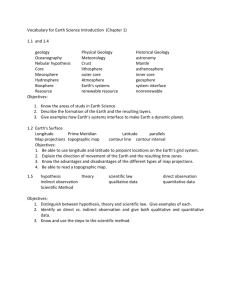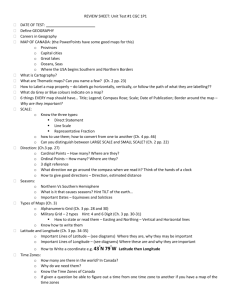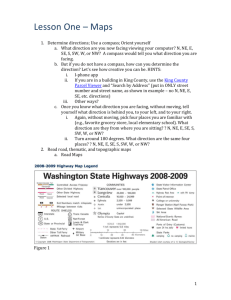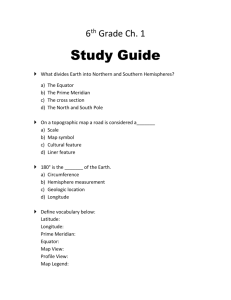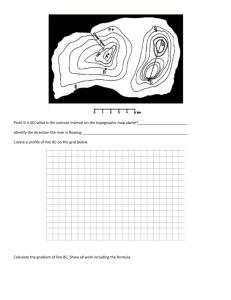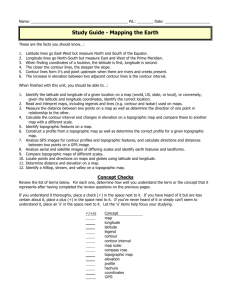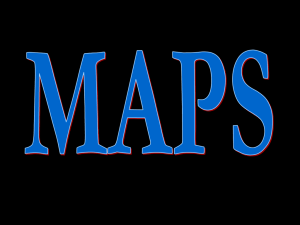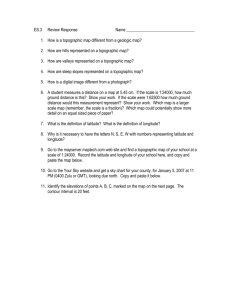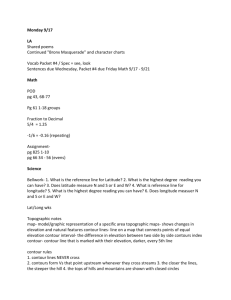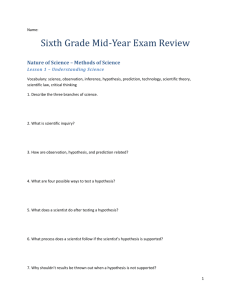Maps and Models Objectives
advertisement
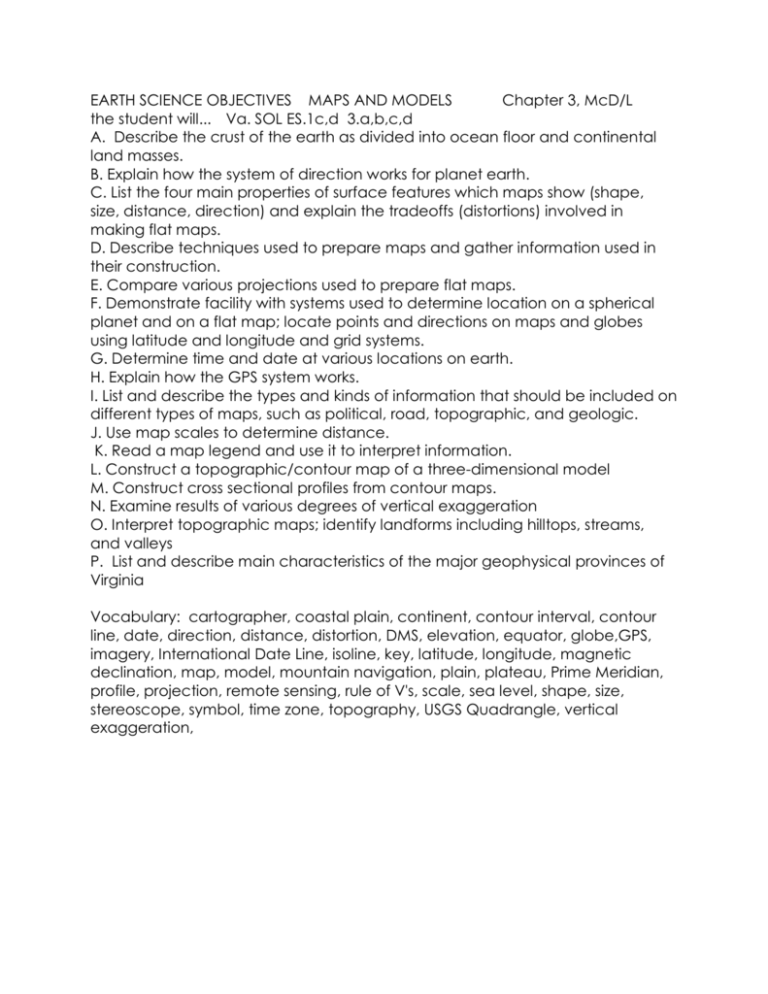
EARTH SCIENCE OBJECTIVES MAPS AND MODELS Chapter 3, McD/L the student will... Va. SOL ES.1c,d 3.a,b,c,d A. Describe the crust of the earth as divided into ocean floor and continental land masses. B. Explain how the system of direction works for planet earth. C. List the four main properties of surface features which maps show (shape, size, distance, direction) and explain the tradeoffs (distortions) involved in making flat maps. D. Describe techniques used to prepare maps and gather information used in their construction. E. Compare various projections used to prepare flat maps. F. Demonstrate facility with systems used to determine location on a spherical planet and on a flat map; locate points and directions on maps and globes using latitude and longitude and grid systems. G. Determine time and date at various locations on earth. H. Explain how the GPS system works. I. List and describe the types and kinds of information that should be included on different types of maps, such as political, road, topographic, and geologic. J. Use map scales to determine distance. K. Read a map legend and use it to interpret information. L. Construct a topographic/contour map of a three-dimensional model M. Construct cross sectional profiles from contour maps. N. Examine results of various degrees of vertical exaggeration O. Interpret topographic maps; identify landforms including hilltops, streams, and valleys P. List and describe main characteristics of the major geophysical provinces of Virginia Vocabulary: cartographer, coastal plain, continent, contour interval, contour line, date, direction, distance, distortion, DMS, elevation, equator, globe,GPS, imagery, International Date Line, isoline, key, latitude, longitude, magnetic declination, map, model, mountain navigation, plain, plateau, Prime Meridian, profile, projection, remote sensing, rule of V's, scale, sea level, shape, size, stereoscope, symbol, time zone, topography, USGS Quadrangle, vertical exaggeration, Assignments: AAT1.2 Construct a map showing how to get to your Adopt-A-Tree from the flagpole in front of HHS. This should be in your lab journal. Text Assignments: (McDougall/Littell Earth Science) Asst 3.1 Read pp. 42-51 p. 47 #1, 2, 4, 5; p. 60# 3, 4, 5, 12; p. 61 #16; p. 64 #2 Asst 3.2 Read pp. 52-59 p. 57 #1, 2, 4; p. 60 #1, 2, 9, 13; p. 61 #15, 21; p. 64 #5 Pacing Guide Earth's Surface - Maps and Models Intro Views of Earth, Landforms Comparing Different Maps Compass Directions; Magnetic Declination Location on a Sphere; Navigation Projecting a Sphere onto Flat Paper; Distortions Equator is Easy; The Problem of Longitude Worksheets, Latitude and Longitude The Degree-Minute-Second system (DMS) Map Scales – Tradeoff between Detail and Area Map Legends, keys, symbols, color codes Showing the Third Dimension – Topographic Maps Topo Map Lab Contour Lines, and Rules for Drawing Them Construction of Profiles; Vertical Exaggeration Modern Maps; Digital Models of Earth, GIS, GPS Report on Maps
